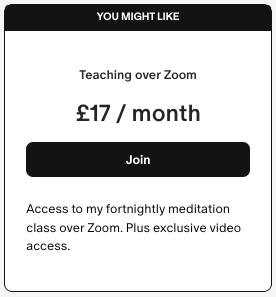The first dhyana
Below is an excerpt from my forthcoming book… © Mahabodhi Burton 4 minute read This excerpt is from Chapter 10 and follows on from Hindrances to Meditation. First dhyana In the first dhyana the five hindrances, and sinking and drifting, are completely absent. As a result, the monk abides in a happy human existence, and is able to focus on what is of real importance to him, namely. he can think clearly because the energy levels within his body and mind allow it he is focused exclusively on cultivating skilful mental states, because this is where his confidence truly lie his interest and investment are no longer with sensory experience This situation is laid out in the Samannaphala Sutta, where the Buddha states that the first dhyana takes place in seclusion from sensuality and unskilful mental states: ‘Quite secluded from sense desires and from unskilful states, the monk enters and abides in the first dhyana, which is accompanied by thinking and pondering, filled with the rapture and happiness born of seclusion.’[1] And this experience ‘pervades his whole body’, by which the Buddha usually means something like ‘thoroughly informs his thoughts, emotions and even deeper unconscious tendencies’; in other words, his experience feels complete and unified; integrated: ‘He pervades, drenches, saturates and suffuses his very body with the rapture and happiness born of seclusion, and there is no place in his entire body that is not suffused with this rapture and happiness.’[2] The first dhyana marks the transition from relying on sensual experience and unskilful mental states to relying only on inner experience and skilful mental states for happiness. Having completely let go of the hindrances the monk has; Confidence (i.e., no more doubt) in the ‘path of skilfulness’ as the route to happiness Energy in mind and body that will support that path (i.e., no ‘energetic’ hindrances) Non-reactivity to sensual experience (i.e., neither sense desire nor aversion) and is thus able to focus solely on cultivating skilful mental states. The presence of thought means that the details of such skilfulness are being worked out in this stage; he is able to bring objects to mind (vitaka), reflect upon them (vicara) and thus experiences ‘rapture and happiness born of seclusion.’ The first dhyana need not necessarily take place in seated meditation, it can arise while the monk is sat in an armchair, just as long as he is reflecting upon a skilful theme to become clearer what it means in practical terms. And as insights occur, he experiences rapture and happiness, which because they arise from a skilful source, are of a spiritual nature; it is that joy which arises...
Hindrances to meditation
Below is an excerpt from my forthcoming book… © Mahabodhi Burton 16 minute read This excerpt is from Chapter 10 and follows on from The Dhyanas. Morality By morality the Buddha doesn’t mean conventional morality, but the natural morality that consists in first seeing, and then bringing into being, the conditions that actually lead to happiness in experience. Hence morality is keenly tied to the practice of mindfulness, in particular the Four Foundations of Mindfulness, thus: Mindfulness of the body We usually think of morality as being concerned with curbing our desires so that we do not do harm, and promoting beneficial outcomes, but Buddhism has a broader remit, because there are conditions other than these that have a positive or negative bearing on suffering; the body is one. I feel that many Buddhists are vague about this; they do not view the state of their body as an ethical issue, only their intentions. As a result, they may wilfully disregard their bodies’ state, and, as a result, when they come to meditate will effectively waste much of the session fighting their body, rather than getting on with the meditation. Although the monk can in theory practice mindfulness of the body in all situations, in practice it is most easily developed in sitting meditation, in which new input is reduced to a minimum, allowing the bodily state of the meditator to gradually become apparent and be dealt with. By allowing his body to sit in a balanced way so that its’ bones take its’ weight, and its’ muscles relax in the knowledge they are supported, the mind will experience the singular, stable, reassuring physical presence of the body. Thus, the monk achieves the best conditions to support mental concentration and absorption; this is why the meditative state is so stable (no will is involved in maintaining it; only natural conditions that support concentration). It is only when this balance is not maintained that his mind is forced back from its’ singular focus to the world of bodily concerns. His ability to maintain his posture is supported or constrained by the energy levels in his body. Morality in the sphere of the body includes making sure that his energy Is neither sluggish nor over-stimulated. Counteracting bodily energy that is sluggish In life in general it is obviously extremely important that we have constant access to good physical energy, if we are to contribute anything substantial to the ‘world community.’ Shantideva puts it bluntly in relation to ‘The perfection of vigour’: ‘Without vigour there is no merit, just as there is...
The Dhyanas
Below is an excerpt from my forthcoming book… © Mahabodhi Burton 6 minute read This excerpt is from Chapter 10 and follows on from The Spiral Path. Samatha meditation The traditional understanding of meditation is that it is the way we work directly on our mind and emotions in order to bring happiness into the world and overcome suffering, for ourselves and others. What we are going to do is first look at samatha or calming meditation and then at vipassana or insight meditation. The literal translation of samatha is ‘calm abiding’;[1] but by calm we don’t just mean unruffled; the implication is much broader than that. The dhyanas Successful samatha meditation is represented by the dhyanas. It could be argued that all Buddhist meditation is meditation on ethics and nothing else, leading as it does to increasingly skilful mental states; symbolized by dhyana. The first and most basic of the dhyanas is described by the Buddha as ‘secluded from unskilful mental states’; the others building upon it, in the sense of being states of increasing skilfulness. In the highest—the fourth dhyana—the meditator is completely focused on Awakening for themselves and others; acting on that vision with power and robustness fortified by equanimity. The hindrances to meditation are five states that in one way or another are un-conducive to bringing happiness into the world. Two concern the mind or body being unready to be skilful because of their energies being too high or too low; with ‘restlessness and anxiety’ the energy in the mind or body is too high to be able to focus clearly; with ‘sloth and torpor’ it is too weak to be useful. The other hindrances to meditation are ‘(irrational) doubt’, ‘sense desire’ and ‘ill-will’; unskilful mental states which I will explore later on. Once the hindrances are completely eradicated one enters into the full mental absorption of the dhyanas, which are, in all likelihood, a —systematisation imposed upon the Buddha’s meditation experience by monks compiling the Buddhist texts at a later date.[2] And while those texts mention eight dhyanas— it is clear that only the first four refer to the Buddha’s experience.[3] The dhyanas are basically a ‘schematic’, representing the four stages a person has to go through in order to be as skilful as they can be and also to clearly see things as they really are, and are exclusively Buddhist.[4] The main thrust of the dhyanas is they manifest increasing mindfulness and skilfulness of mind and body, with two outcomes: The monk maximizes the skilfulness–and thus happiness, brought into the world for himself and others. He makes himself as...
The Spiral Path
Below is an excerpt from my forthcoming book… © Mahabodhi Burton 3 minute read This excerpt commences Chapter 10, ‘Augmentative Conditionality: The Spiral Path.’ The augmentation of conditions Each Foundation of Mindfulness is a condition for bringing into being a relative degree of happiness or suffering, but due to the Law of Conditionality, the combined effect of all four is augmentative; they are ‘made greater by being added to’; if we look after our body; attend in the right way to feeling; develop increasingly skilful states of mind and emotion; and become clearer about the way that things are and work, then the happiness that we bring to ourselves and others is likely to ‘take off’; this is the meaning of dhyana, which is a result of developing skilful mental states through calming meditation (samatha), and which provide the basis for the development of insight (vipassana), culminating in Awakening; these two stages together constituting what is called the Spiral Path. The Wheel and the Spiral The round of endless suffering and the ascent to Nirvana through augmentative conditionality are represented in the Buddhist tradition by the Wheel of Life[1] and the Spiral Path (see diagram). Image source unknown. Effort has been made to establish author. In pictorial versions of the Wheel a ferocious demon called Yama—the ‘Lord of Impermanence’—holds the Wheel like a mirror towards the viewer, as if to say; ‘This is what your life is like.’ At the centre of the Wheel are a pig, a cock and a snake biting each other’s tails, representing respectively ignorance, greed and hatred; the driving forces behind Samsara. Then comes a circle divided vertically into white and black segments, which represents beings rising to greater happiness in the white segment and falling down into greater suffering in the black, according to their karma. Outside of this is a circle, in which there are six ‘realms’, that we can either take literally–as actually existing places—or metaphorically—as psychological states; these are the realms of the gods, titans, humans, animals, hungry ghosts and hell beings. Each is a state one can be born into—or experience—because of one’s karma. On the outer rim are twelve images, each representing a nidana or link: ranging from ignorance through craving all way to old age and death. The Spiral Path Sangharakshita has drawn particular attention to the positive nidana sequence leading to Nirvana, which he calls ‘The Spiral Path.’[2] Bhikkhu Bodhi calls this sequence ‘Transcendental Dependent Arising’,[3] lamenting that it doesn’t get the attention it deserves in Theravada Buddhism.[4] The Spiral Path in the Upanisa Sutta is as...
Being Ready for Anything
Below is an excerpt from my forthcoming book… © Mahabodhi Burton 6 minute read This excerpt is taken from the chapter ‘Kindness front and centre‘ and follows on from The Five Paths as cumulative. Being ‘ready for anything’ Once the five powers have been attained the monk’s ‘spiritual personality’ has been rounded off and made unshakeable; it Is completely oriented towards a dharmic perspective. Once his spiritual faculties are powers, he is ‘fully equipped’ in terms of personal qualities and skills to do whatever work is necessary to attain Nirvana, and thus traditionally is seen as guaranteed to attain Nirvana within seven lifetimes and is known as a Stream Entrant;[1] on the Spiral Path a stage known as ‘Knowledge and Vision of Things as They Really Are’ (yathabhuta-nanadassana). On the Path of Accumulation, the monk accumulates ‘knowledge and merit’, making effort to understand how things are and to develop skill in practice. On the Path of Preparation, he goes for refuge more deeply, turning the spotlight on himself, and preparing to face ‘Things as They Really Are’ through balancing and intensifying his practice. By the time his mindfulness has become an unshakable power, he is able to turn it unblinkingly to anything and everything he chooses, and thus he commences the Path of Seeing. In physics, power is defined as ‘the ability to do work:’ the monk is now ready and able to do the spiritual spadework involved in seeing into the nature of reality; importantly taking on board and working creatively with his deep inner tendencies to Unawakening (anusaya). He has no ‘spiritual weaknesses;’ therefore, Reality cannot shake his mindfulness, confidence, wisdom, meditative concentration and ethical robustness; and whereas before he could only maintain mindfulness under certain conducive conditions, now there are no conditions under which he cannot maintain it. The Path of Seeing, and the remaining two paths, develop this insight all the way to Nirvana. Prior to stream entry, three ‘fetters’ held the monk back: The belief that there are elements within himself that are fixed and unchanging (Skt. satkayadrsti) The tendency to view practice as an end in itself (Skt. silavrata paramarsha) implying ‘going through the motions’ in his practice Vestiges of doubt that the Dharma is the way forward (Skt. vicikitsha) Sangharakshita paraphrases these as superficiality, habit and vagueness. At stream entry these fetters are gone; the monk is guaranteed to attain Awakening because he possesses 1) confidence in his ability to change, 2) wholehearted application to change, 3) clarity in the means to change. Right View Before stream entry the monk entertained one or more wrong views;[2]...







 Users Today : 40
Users Today : 40 Users Yesterday : 13
Users Yesterday : 13 This Month : 1017
This Month : 1017 Total Users : 16174
Total Users : 16174
